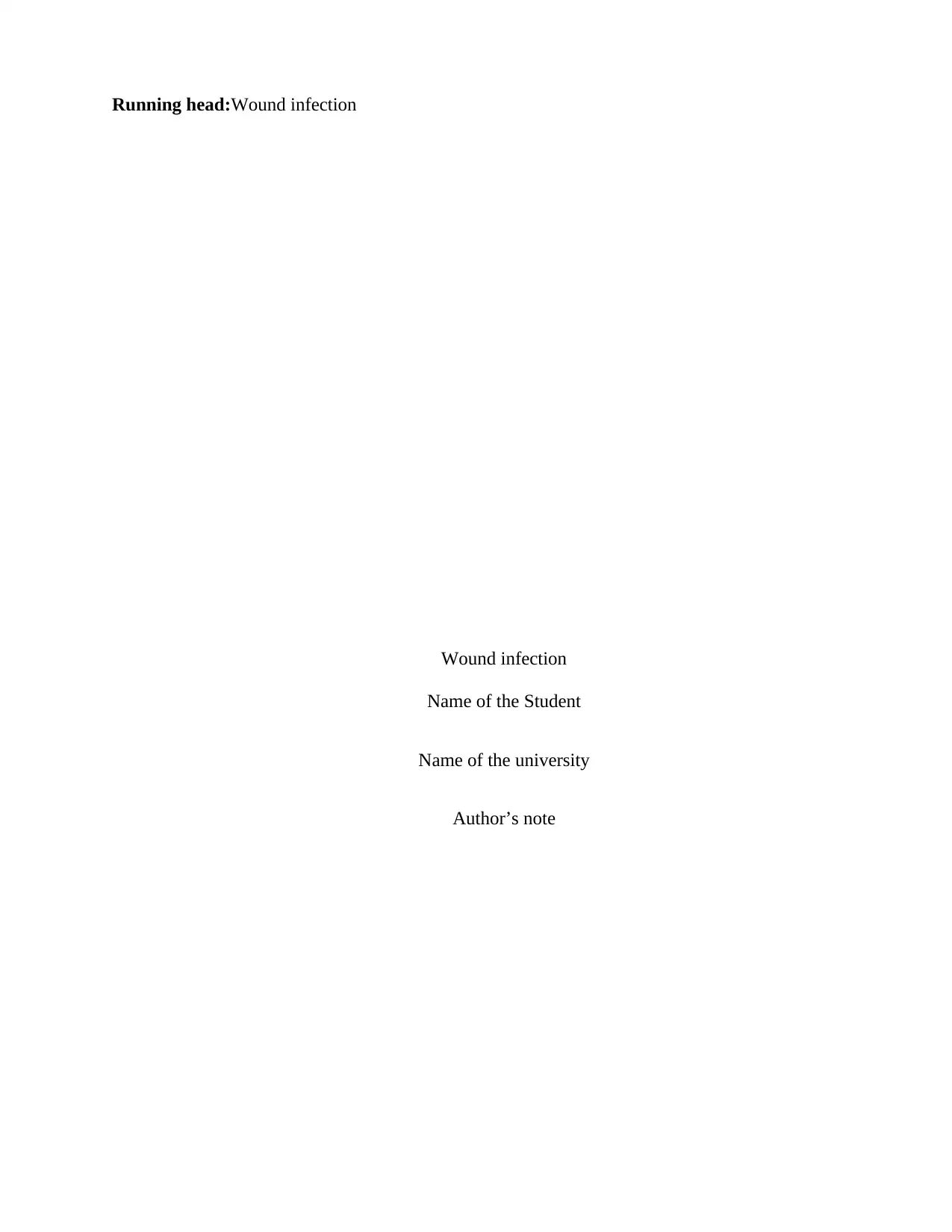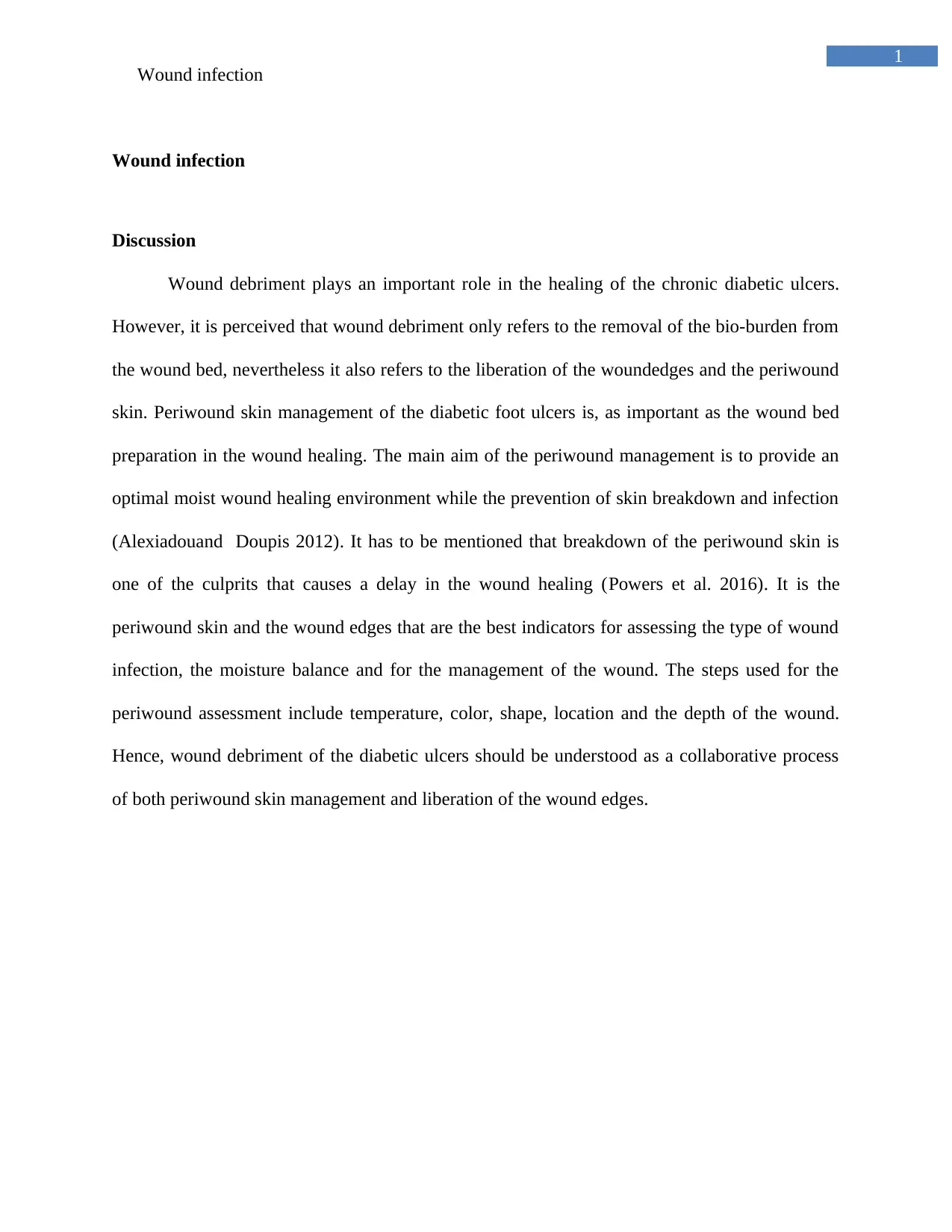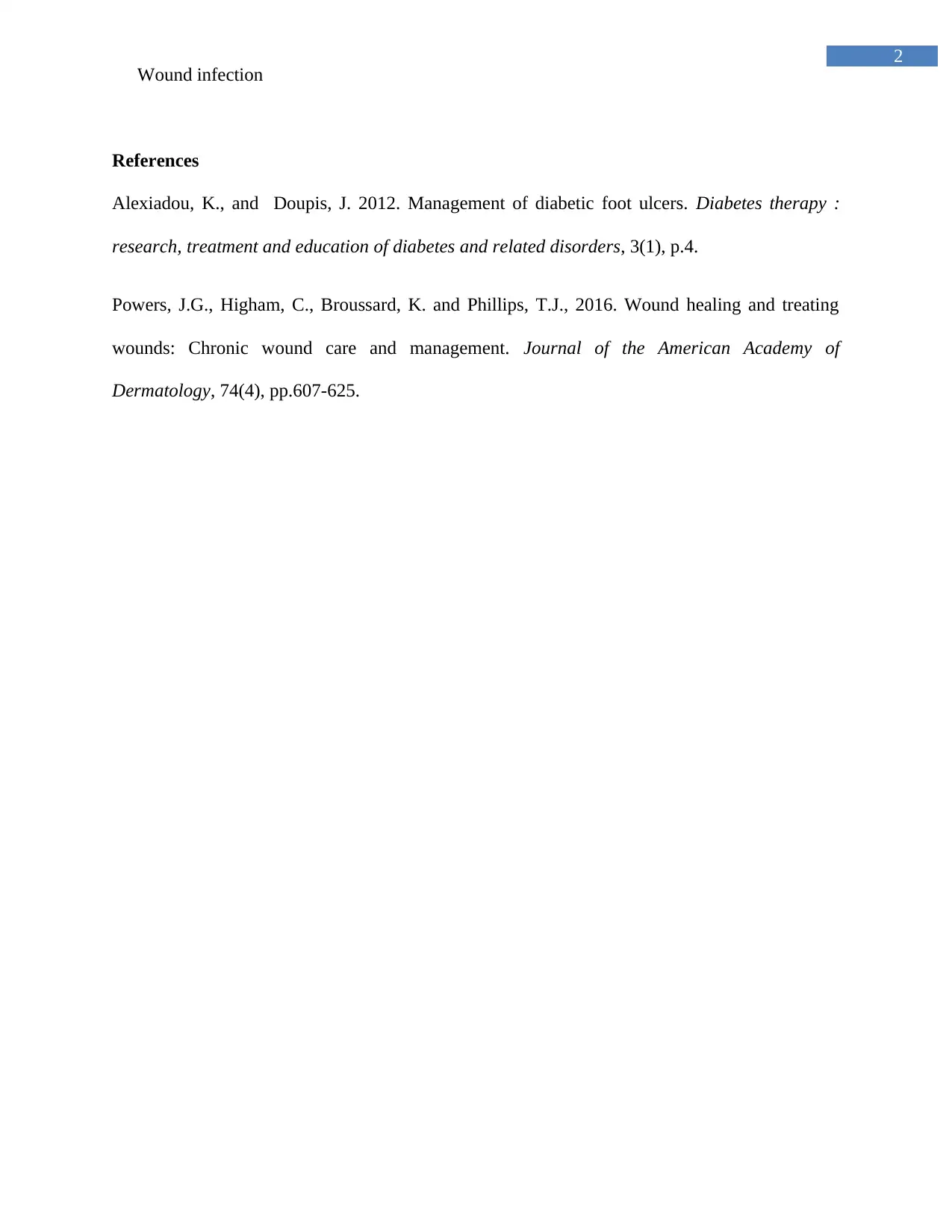Diabetic Ulcer Management: Wound Debridement and Periwound Skin Care
VerifiedAdded on 2023/04/25
|3
|329
|280
Essay
AI Summary
This essay examines the critical role of wound debridement in the healing process of chronic diabetic ulcers, emphasizing that debridement extends beyond merely removing bio-burden to include liberating wound edges and managing periwound skin. The discussion highlights the significance of periwound skin management in diabetic foot ulcers, noting that its primary goal is to foster an optimal moist wound healing environment while preventing skin breakdown and infection, a key factor in delaying wound healing. It stresses that the condition of the periwound skin and wound edges serves as a valuable indicator for assessing wound infection type and moisture balance, guiding effective wound management strategies. The essay concludes that successful wound debridement in diabetic ulcers requires a collaborative approach, integrating both periwound skin management and liberation of the wound edges to promote effective healing.
1 out of 3










![[object Object]](/_next/static/media/star-bottom.7253800d.svg)